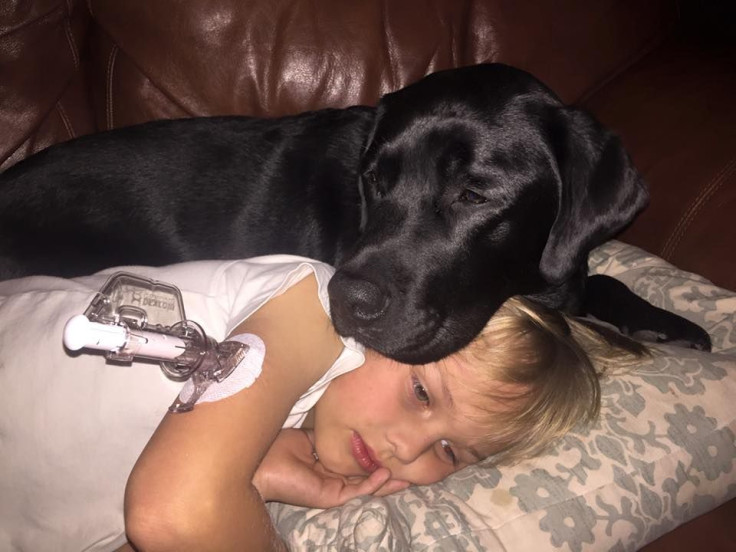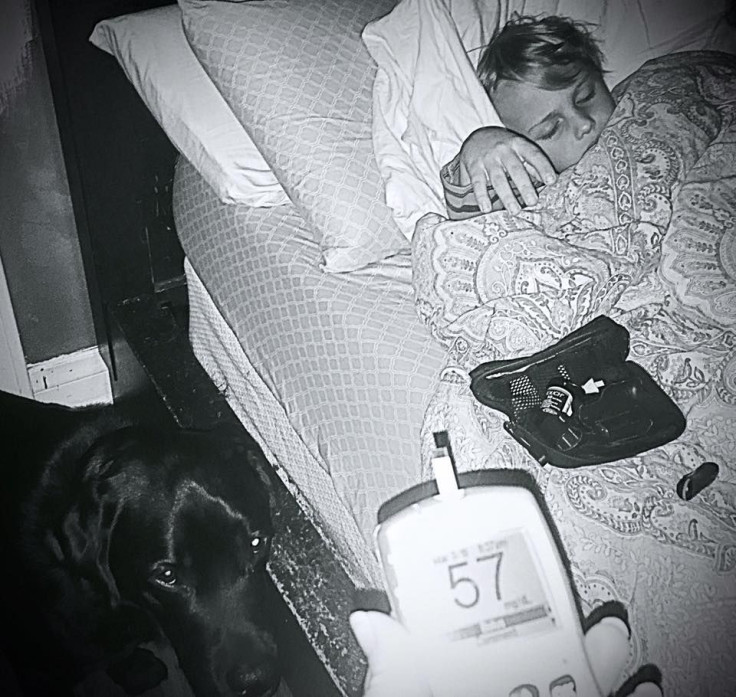Jedi The Dog Senses Blood Glucose Levels Of Luke, 7-Year-Old Diabetic

For 7-year-old Luke Nuttall, who was born with type 1 diabetes, his faithful dog Jedi is certainly living up to his name. While he may not be fighting to protect the Star Wars galaxy, Jedi the dog does something just as admirable: He watches over Luke every night as he sleeps, devotedly keeping track of his rising and falling glucose levels.
Luke’s mother, Dorrie, captured one of the loving moments between dog and boy and posted it to Facebook. In her post, she described how Luke’s blood glucose levels may drop throughout the night as he’s sleeping, but he doesn’t wake up on his own. That’s why Jedi has to keep an eye on him at night, and is trained to wake up his parents when his blood sugar is low. They get up around three times a night, every night, to keep his glucose normal.
And it’s Jedi’s remarkable ability to sense low glucose levels that makes all the difference. Some dogs have shown an ability to scent and respond to hypoglycemia — or too much insulin and not enough blood sugar in type 1 diabetics — but research still remains inconclusive on the issue. Certain dogs can indeed be trained to sniff out low blood sugar in patients, and Jedi was one of them because he happened to be a perfect match for Luke. Jedi was trained to bring a stick to alert Luke’s parents, to wave a paw if his blood sugar is too high, or to bow if it’s too low.

“This may look like a dog, a sleeping boy and a number on a screen, but this, this moment right here is so much more,” Dorrie wrote in the Facebook post, which went viral. “This is a picture of Jedi saving his boy. Saving him from highs and lows and from ever feeling alone.”
“[Five] minutes before I took this picture we were all asleep,” Dorrie continued. “No alarms were going off, no one was checking blood, no one was thinking about diabetes, and it’s in those moments when our guards are down, when we are just living life, when we let our minds drift from diabetes, that it has the upper hand — and things can get scary very fast…but thankfully we have a Jedi.”
Dorrie woke to find Jedi on top of her, a way of alerting her that something was wrong. Despite the fact that Luke’s continuous glucose monitor (CGR) initially said his levels were fine, he quickly dropped much lower — and Dorrie was there to catch it, thanks to Jedi.
According to the American Diabetes Association , over 9 percent of the population had diabetes in 2012, 1.25 million of whom had type 1 diabetes. Patients with type 1 diabetes don’t produce enough insulin in their pancreas, which in turn impairs the maintenance of glucose in the blood. For Luke’s parents, this means they must be on watch at night to monitor his blood glucose.
“We still set alarms every night,” Dorrie told CNN . “It’s really hard being someone’s pancreas.”
But for now, the family is grateful to have Jedi by Luke’s side. “This is a picture of a Jedi saving his boy,” Dorrie wrote in the Facebook post. “Amidst a disease that does everything in its power to make life so much harder, this is a picture of loyalty and love and perseverance. A reminder that we will not let diabetes win, that we will never give up, and that we will always fight for our children.”



























